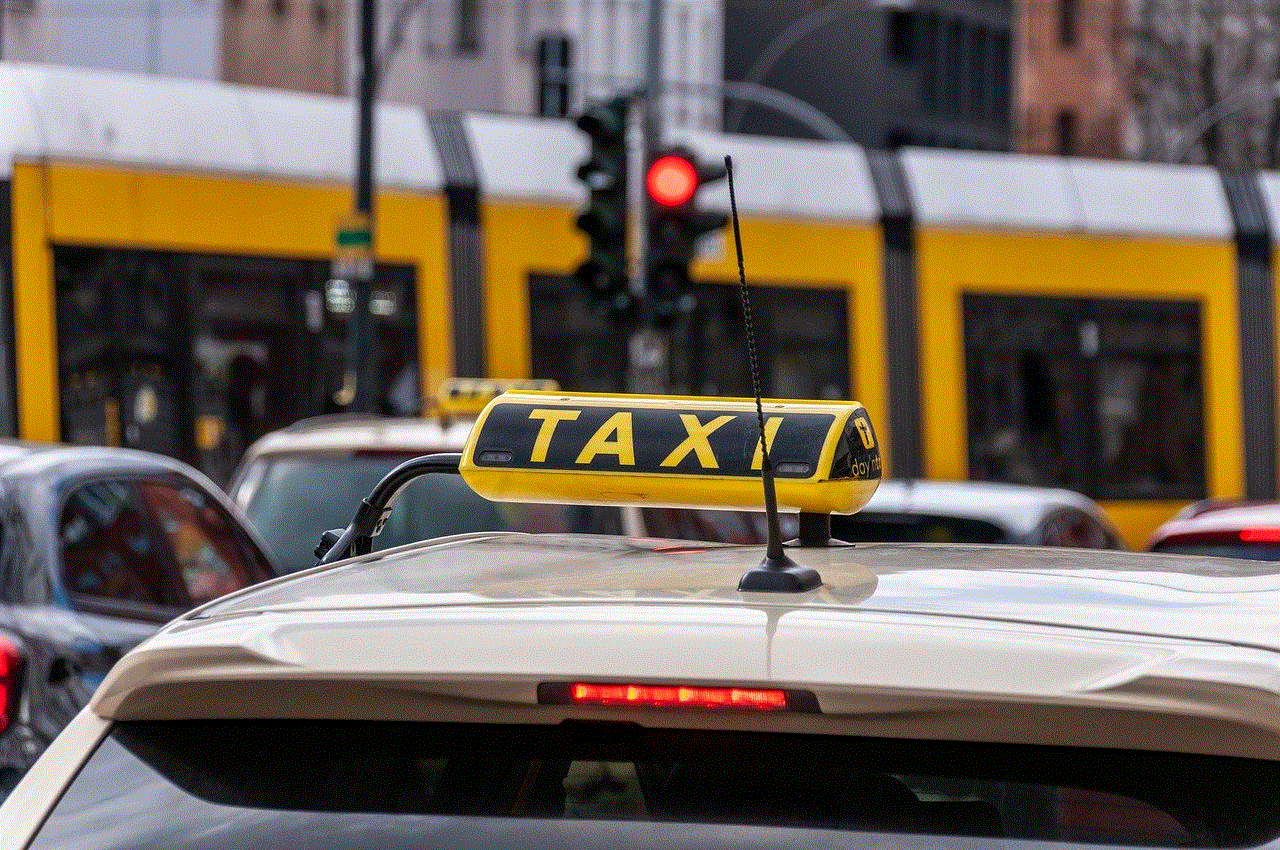how to set location on android
Android devices have become an integral part of our daily lives, providing us with a plethora of features and functionalities that make our lives easier. One of the most useful features of an Android device is its ability to set locations, allowing us to navigate and find our way around with ease. Whether you are exploring a new city or finding your way to a friend’s house, setting your location on an Android device can be incredibly helpful. In this article, we will discuss the various ways to set location on an Android device and how to make the most out of this feature.
1. What is Location Setting on Android ?
Before we dive into the methods of setting location on an Android device, let us first understand what this feature actually means. Location setting on an Android device refers to the process of setting your current location as a reference point on the device. This enables the device to use this information to provide you with accurate location-based services like navigation, weather updates, and local recommendations.
2. Why is Setting Location Important on Android?
Setting your location on an Android device is crucial for a variety of reasons. Firstly, it allows you to get accurate directions and navigate to your desired destination without getting lost. Secondly, location setting enables you to receive real-time weather updates for your current location, ensuring that you are always prepared for any weather changes. Additionally, with location setting, you can discover local places of interest, such as restaurants, cafes, and attractions, based on your current location. This can be incredibly helpful when you are exploring a new place.
3. How to Set Location on Android?
Now that we have established the importance of setting location on an Android device let us discuss the various ways to do so. There are primarily three ways to set location on an Android device – using the device’s built-in GPS, using Wi-Fi, and using mobile networks.
a. Using Built-in GPS
The most accurate way to set your location on an Android device is by using its built-in GPS (Global Positioning System). This method uses satellites to pinpoint your exact location and provides you with accurate location-based services. To set your location using GPS, follow these steps:
1. Go to the Settings menu on your Android device
2. Tap on “Location” or “Location Services”
3. Enable the toggle for “Use GPS” or “Location Accuracy”
4. Your device will now use GPS to determine your location
b. Using Wi-Fi
Another way to set your location on an Android device is by using Wi-Fi. This method uses nearby Wi-Fi networks to determine your location. To set your location using Wi-Fi, follow these steps:
1. Go to the Settings menu on your Android device
2. Tap on “Location” or “Location Services”
3. Enable the toggle for “Use Wi-Fi” or “Wi-Fi Scanning”
4. Your device will now use nearby Wi-Fi networks to determine your location
c. Using Mobile Networks
The third and final method to set your location on an Android device is by using mobile networks. This method uses your mobile network’s cell towers to determine your location. To set your location using mobile networks, follow these steps:
1. Go to the Settings menu on your Android device
2. Tap on “Location” or “Location Services”
3. Enable the toggle for “Use Mobile Networks” or “Network Location”
4. Your device will now use your mobile network’s cell towers to determine your location
4. How to Change Location Settings on Android?
If you want to change your location settings on an Android device, you can do so by following these steps:
1. Go to the Settings menu on your Android device
2. Tap on “Location” or “Location Services”
3. Here, you can toggle on or off the different location settings, depending on your preference
4. You can also tap on “Mode” to change the location accuracy mode to “High accuracy” or “Battery saving.”
5. Additionally, you can tap on “Google Location Accuracy” to improve the accuracy of your location using Google’s location service.
5. How to Set a Home Location on Android?
Setting a home location on your Android device is incredibly useful, as it allows you to quickly navigate to your home without having to manually type in the address every time. To set your home location on an Android device, follow these steps:
1. Open Google Maps on your Android device
2. Search for your home address
3. Once the location appears on the map, tap on the address at the bottom of the screen
4. A pop-up window will appear with options like “Add or remove labels” and “Share.”
5. Tap on “Add or remove labels”
6. Tap on “Home”
7. The address will now be saved as your home location.
6. How to Set a Work Location on Android?
Similar to setting a home location, setting a work location on your Android device can be incredibly helpful, especially if you have a regular commute to your workplace. To set your work location on an Android device, follow these steps:
1. Open Google Maps on your Android device
2. Search for your work address
3. Once the location appears on the map, tap on the address at the bottom of the screen
4. A pop-up window will appear with options like “Add or remove labels” and “Share.”
5. Tap on “Add or remove labels”
6. Tap on “Work”
7. The address will now be saved as your work location.
7. How to Set a Custom Location on Android?
In some cases, you may want to set a custom location on your Android device, such as a friend’s house or a restaurant. To set a custom location on an Android device, follow these steps:
1. Open Google Maps on your Android device
2. Search for the desired location
3. Once the location appears on the map, tap and hold on the screen to drop a pin
4. A pop-up window will appear with the pin’s address and options like “Add or remove labels” and “Share.”
5. Tap on “Add or remove labels”



6. Tap on “Custom”
7. The address will now be saved as a custom location.
8. How to Set a Location-based Reminder on Android?
Android devices also allow you to set location-based reminders, which can be incredibly useful when you have a task to do at a specific location. To set a location-based reminder on an Android device, follow these steps:
1. Open Google Keep on your Android device
2. Tap on the “Add reminder” icon at the bottom of the screen
3. Enter the reminder text
4. Tap on the “Location” icon next to the reminder text
5. Type in the location or select it from the list of suggested places
6. Set the desired time and date for the reminder
7. Tap on “Save.”
8. The reminder will now be triggered when you reach the specified location.
9. How to turn off Location on Android?
If you do not want to share your location or use location-based services on your Android device, you can turn off location services by following these steps:
1. Go to the Settings menu on your Android device
2. Tap on “Location” or “Location Services”
3. Disable the toggle for “Use GPS,” “Use Wi-Fi,” and “Use Mobile Networks.”
4. Additionally, you can go to “Google Location Accuracy” and toggle off “Improve accuracy” to completely turn off location services.
10. How to Manage App permissions for Location on Android?
Many apps on an Android device require access to your location to provide you with accurate services. However, you may not want to grant all apps access to your location. To manage app permissions for location on an Android device, follow these steps:
1. Go to the Settings menu on your Android device
2. Tap on “Apps” or “Applications”
3. Select the app for which you want to manage location permissions
4. Tap on “Permissions”
5. Here, you can toggle on or off the location permission for the selected app.
11. Conclusion
In conclusion, setting location on an Android device is a simple yet incredibly useful feature that can enhance your overall experience with the device. Whether you want to navigate to a new place or receive real-time weather updates, setting your location on an Android device can make your life easier. With the various methods and customization options available, you can easily tailor the location settings on your Android device to suit your needs. So, the next time you use your Android device, make sure to make the most out of this feature and set your location for a seamless experience.
iphone key logger
In today’s digital age, the use of smartphones has become an integral part of our daily lives. With the advancements in technology, these devices have become more than just a means of communication. They hold valuable personal information, sensitive data, and even financial details, making them a prime target for hackers and cybercriminals. This has led to the rise of key loggers, a type of software that records every keystroke made on a device. In this article, we will delve deeper into the world of iPhone key loggers, their uses, potential risks, and how to protect yourself from them.
What is an iPhone key logger?



An iPhone key logger, also known as a keystroke logger, is a type of software or hardware that records every keystroke made on an iPhone. This includes passwords, usernames, credit card details, and any other sensitive information entered through the keyboard. The logs are then sent to a remote server or stored locally, giving the attacker access to the victim’s personal information.
There are two types of key loggers: software-based and hardware-based. Software-based key loggers are usually hidden in the background and can be installed on the device without the user’s knowledge. They can be disguised as legitimate apps, making it difficult to detect them. On the other hand, hardware-based key loggers require physical access to the device and are attached to the keyboard or USB port, making them easier to spot.
Why are key loggers used?
The use of key loggers has become increasingly popular among cybercriminals due to the valuable information they can obtain. They are commonly used for identity theft, financial fraud, and espionage. With the rise of online banking and shopping, key loggers have become a lucrative tool for cybercriminals to steal personal and financial information. They can also be used to monitor employees’ activities, track a partner’s actions, or even spy on someone for malicious purposes.
How can an iPhone key logger infect your device?
There are various ways in which an iPhone key logger can infect a device. The most common method is through malicious email attachments or links. These emails may appear to be from a trusted source and contain a link or attachment that, when clicked, installs the key logger on the device. Another way is through fake apps that are designed to look like legitimate ones. These apps may ask for excessive permissions, giving the attacker full access to the device.
Additionally, a key logger can also be installed through physical access to the device, either by someone who knows the victim or by the victim themselves unknowingly downloading the software. This can happen when the victim connects their device to an infected computer or downloads software from untrusted sources.
What are the risks of having an iPhone key logger on your device?
The presence of a key logger on an iPhone can have serious consequences. It can compromise the victim’s personal and financial information, leading to identity theft and financial loss. Cybercriminals can use the information obtained to access the victim’s accounts, make unauthorized transactions, and even open new accounts in their name. In addition, key loggers can also be used to track a victim’s location, monitor their calls and messages, and even activate the device’s camera and microphone without their knowledge.
Moreover, the installation of a key logger on an iPhone can also result in a breach of privacy. Personal conversations, emails, and other sensitive information can be accessed by the attacker, potentially causing embarrassment and damage to the victim’s personal and professional life.
How can you protect yourself from iPhone key loggers?
Prevention is always better than cure when it comes to protecting your device from key loggers. Here are some steps you can take to safeguard your iPhone from these malicious software:
1. Be cautious of emails and attachments from unknown sources: Never open emails or click on links from unknown sources, as they may contain malicious software. Be wary of emails that ask you to download attachments or click on links, even if they appear to be from a trusted source.
2. Download apps from trusted sources: Stick to downloading apps from the official App Store to minimize the risk of installing a fake or malicious app. If you must download from third-party sources, make sure to research the app and its developer to ensure its legitimacy.
3. Keep your device and apps up to date: Regularly update your iPhone’s operating system and apps to patch any security vulnerabilities that may be present.
4. Use a reputable security software: Install a reputable security software that can detect and block key loggers and other malicious software.
5. Avoid using public Wi-Fi: Public Wi-Fi networks are often unsecured, making it easier for attackers to intercept your data. Avoid using public Wi-Fi when accessing sensitive information.
6. Use two-factor authentication: Enable two-factor authentication whenever possible to add an extra layer of security to your accounts.
7. Be mindful of phishing scams: Be cautious of emails, texts, or calls that request personal information. Legitimate companies will never ask for sensitive information through these channels.
8. Regularly check your device for any suspicious activities: Keep an eye out for any unusual activities on your device, such as apps or software that you did not install, unknown contacts, or unexplained data usage.
9. Use strong passwords: Make sure to use strong and unique passwords for all your accounts, and change them regularly.
10. Use a password manager: Consider using a password manager to generate and store strong, unique passwords for all your accounts.



Conclusion
In conclusion, iPhone key loggers are a serious threat that can lead to identity theft, financial fraud, and a breach of privacy. It is crucial to be vigilant and take necessary precautions to protect your device from these malicious software. By following the steps mentioned above and staying informed about the latest security threats, you can safeguard your personal information and stay one step ahead of cybercriminals. Remember, prevention is always better than cure, and it is always better to be safe than sorry.